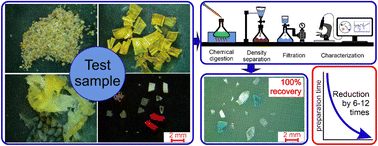В журнале Analytical Methods (IF 2,7) опубликована статья, соавторами которой являются ученые Института: руководитель группы ГЭИиХА ЦСИ к.х.н. Ю. С. Сотникова, руководитель группы ГОС ЦСИ к.х.н. Е.В. Карпова , лаборант ГЭИиХА Сон Дэ Иль, руководитель ЦСИ к.ф.-м.н. Д.Н. Половяненко и директор Института д.ф.-м.н., проф. Е.Г. Багрянская :
The development of an analytical procedure for the determination of microplastics in freshwater ecosystems
Yulia S. Sotnikova, Elena V. Karpova, Dae Il Song, Dmitriy N. Polovyanenko, Tatiana A. Kuznetsova, Svetlana G. Radionova and Elena G. Bagryanskaya
Anal. Methods, 2024, 16(46), 8019-8026,
First published: 21 Oct 2024
Graphical Abstract
Abstract
Microplastics raise growing concerns regarding their ubiquity and possible negative impact on human health; therefore, the need for comparable, standardized methods is urgent. Modern instrumental analytical techniques, such as IR and Raman spectroscopy, pyrolysis-gas chromatography-mass spectrometry and electron microscopy, are fundamental for the analysis of microplastics in environmental and biological objects. The quality of the samples prepared is a determining factor in the validity of the results obtained. Based on our research, currently approaches to preparing environmental samples are time-consuming and need some improvements. To overcome this problem, a new method for the preparation of freshwater samples was developed. In our research, peracetic acid and its combination with Fenton's reagent were employed for the first time to prepare natural water samples. Furthermore, we proposed the use of a heavy liquid based on sodium heteropolyoxotungstate with a density of 1.70 g cm>−3, which allows the extraction of polymers with high density and is non-toxic. The new approach was compared with the most commonly used sample preparation method (peroxide oxidation (30% H2O2 + 0.05 M Fe(II) solution)) and showed higher recovery efficiency for microplastic particles in both test and freshwater samples collected from the rivers Ob (Novosibirsk, Russia) and Berd (Berdsk, Russia). The obtained results are promising; the time spent on this procedure is no more than 3 hours, which is 6 to 12 times faster than the most widely used methods. In addition, this approach makes it possible to obtain samples suitable for subsequent analysis by any analytical instrumental method.


